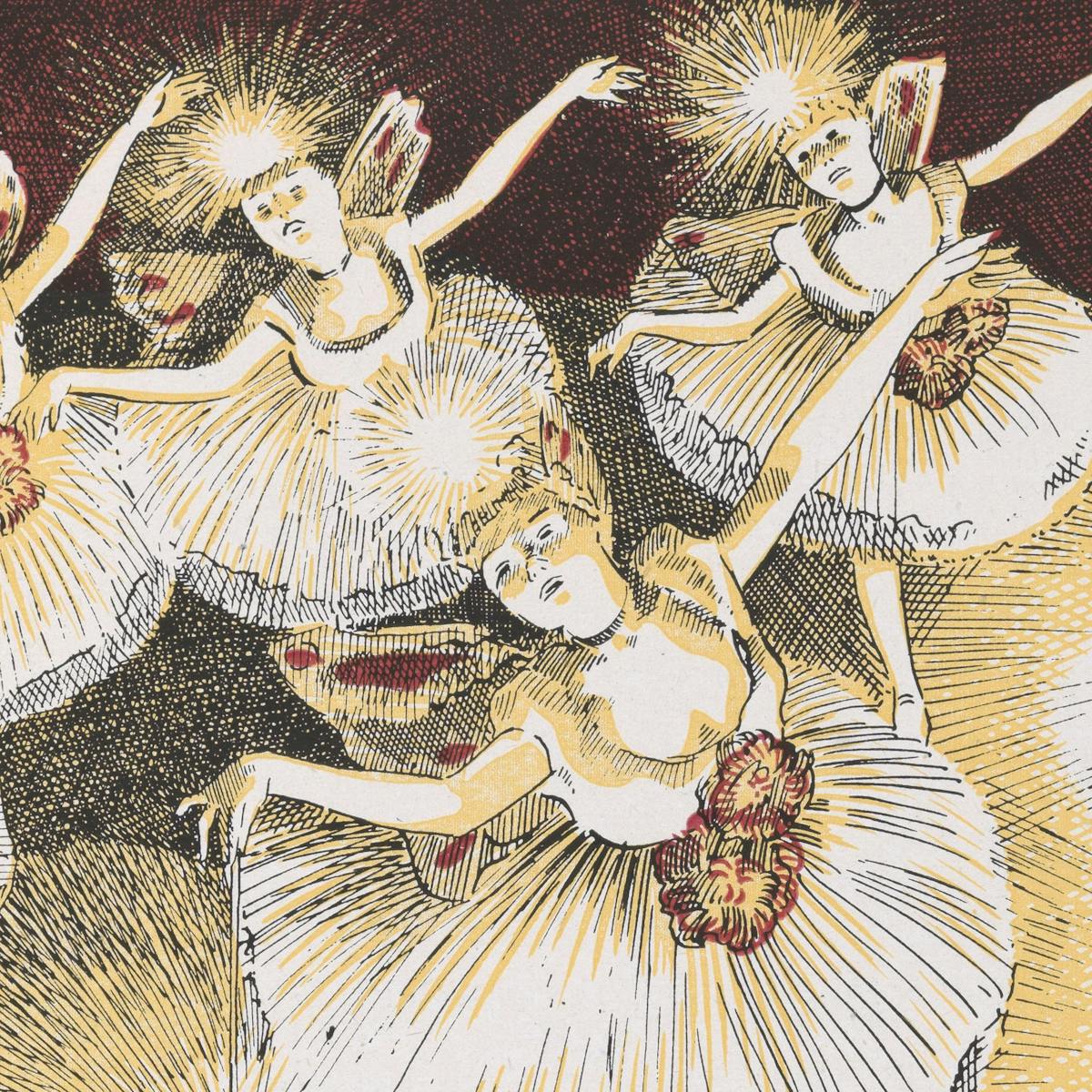As the 20th century dawned, both elite and masses basked in the marvellous and unearthly glow of the new electric illumination.
Dazzling luxury
Words by Ruth Gardeaverage reading time 4 minutes
- Serial
Despite sparking widespread popular interest in the 1880s, early electric illumination was too costly for the general public. The market was initially confined to the wealthiest city districts and to elite leisure activities. Early sites lit by electricity included the House of Commons dining room, La Scala in Milan, and Rome’s École des Beaux Arts. In theatres electrical lighting was used for special effects, drawing in audiences and bringing box-office success. Electric light soon became associated with luxury, sophistication and prestige.
In 1886 the Statue of Liberty was illuminated, further enhancing its symbolic values of progress and enlightenment.
At world fairs and expositions, a wider public witnessed and was dazzled by spectacular demonstrations of electrical light. These demonstrations cleverly exploited an otherworldly quality unknown in earlier forms of lighting. Prior to Edison’s invention of the incandescent lamp, lighting had always been associated with the flickering of fire and emissions of smoke. While the arc lamp had hissed and spluttered in a way akin to flame, the incandescent lamp was unnaturally steady and smoke-free, making this new form of light peculiarly magical.

The dazzling combination of light and falling water made the illuminated fountain a popular installation at technology exhibitions and elsewhere.
This mystical quality, amplified in the spectacular light demonstrations that were increasingly popular in the US and Europe, was much remarked-upon. In 1880 a local newspaper reported the lighting-up of the courthouse in Wabash, Indiana, by the Brush Electric Company:
“People stood overwhelmed with awe, as if in the presence of the supernatural. The strange weird light exceeded in power only by the sun, rendered the square as light as midday… Men fell on their knees, groans were uttered at the sight, and many were dumb with amazement.”
Electrical illuminations were among the most popular exhibits at the fairs and expositions in the late 19th and early 20th centuries. Organisers quickly recognised their potential to dazzle by creating dramatic effects, lighting up buildings, gardens and fountains. At the Paris Exhibition of 1881 they were hyperbolically described by the Times correspondent as “greater than anything that has ever been seen in the world”.
The 1915 Panama-Pacific Exposition set new standards of spectacular illumination, using a wide range of new technologies to emphasise the three-dimensionality of the buildings and to imitate natural phenomena, such as sunsets. In his 1920 book ‘Artificial Light’, Matthew Luckiesh claimed that the resulting display even exceeded the splendour of nature itself: “It was a silent but pulsating display of grandeur dwarfing into insignificance the aurora borealis in its most resplendent moments.”

Some visitors thought the night-time illuminations of Niagara Falls further enhanced its spectacular dramatic power.
Electricity was exploited not only to mimic nature but to enhance its sublime power. In 1879 Niagara Falls was illuminated with electric light for the first time, drawing large crowds.
In pictures

Werdermann chandeliers were used at the Theatre de l’Opera to illuminate the foyer reserved for season-ticket holders.

Three different forms of lighting combined to create “a dazzling effect” in the foyer of the Paris Opéra.

The electric illuminations of the Éden-Théâtre in Paris were focused on its spectacular facade, which was inspired by Indian architecture.

Incandescent lamps were preferred in galleries displaying valuable objects as cleaner and safer sources of illumination than gas lamps.

By defying darkness, artificial light also symbolised humankind’s dominion over nature.

The picturesque illuminations at the 1904 World’s Fair (or Louisiana Purchase Exposition), in St Louis, Missouri.

One of the most striking displays at the 1885 International Inventions Exhibition was electricity for lighting.
The Panama-Pacific International Exposition Brochure described the “soft, restful, yet perfect light” afforded by the “entirely new system of floodlighting”.
In 1907, when Walter D’Arcy Ryan of the General Electric Company designed a far more powerful illumination of the Falls, the spectacle ran for several weeks and prompted an extravagant outpouring of enthusiasm. According to the New York Tribune of 5 September 1907, the Falls looked far better lit up at night than they ever had during the daylight. The dramatic effects of the multi-coloured lights were such that “words fail to describe the magnificence of the spectacle”. Another observer wrote: “It was a riot of glorious beauty, so new, so strange, so marvelous – so like some unearthly and unexplained magic that it held the spectator startled, then spellbound, speechless and delighted.” By the 1920s the Niagara illuminations had become a nightly exhibition and drew visitors from across the country.
Corporate and civic organisations were also drawing attention to their buildings with lighting effects that functioned as a form of publicity. By emphasising awe-inspiring architectural features, such as grandiose classical facades or the soaring height of skyscrapers, they harnessed the symbolic values expressed by light in general and by electric illumination specifically – progress, evolution, modernity and technological advancement. These values were likewise embodied in the industrial manifestations of electricity – power stations, generators, transmission towers – that began to materialise in the urban and rural landscape as the 20th century approached.
About the author
Ruth Garde
Ruth Garde is a freelance curator and writer, focusing on the fields of history, art, architecture and heritage. Over the past fourteen years she has worked extensively with Wellcome Collection, writing and curating a variety of projects encompassing history, human health, art and science.



